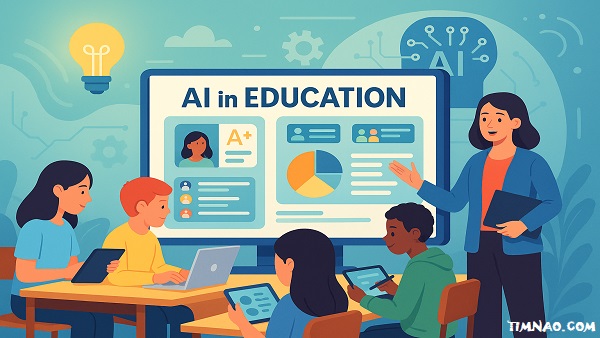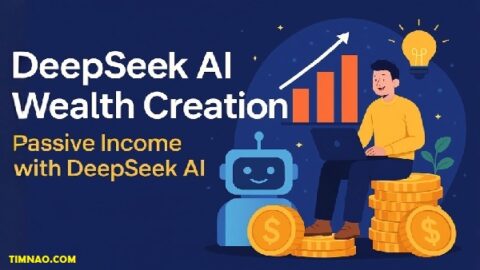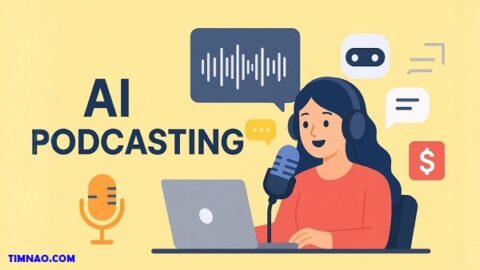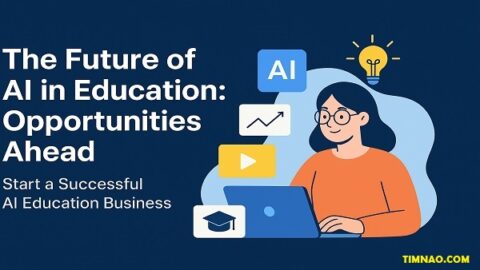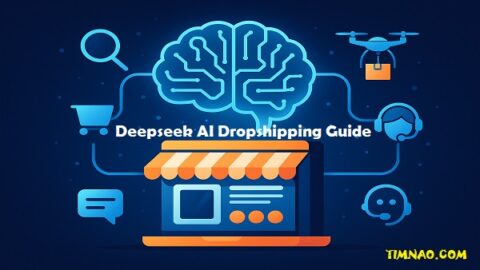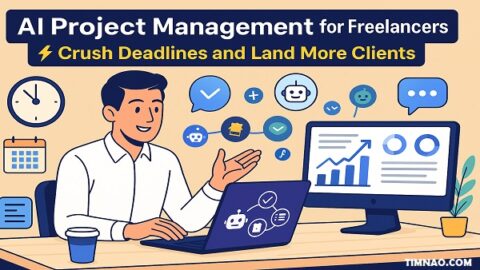Unlock the Bright Future of AI in Education: Transformative Tools That Truly Work 💡
AI in education is no longer just a buzzword—it’s a revolutionary force transforming how teachers teach and students learn. From personalized learning experiences and automated grading to intelligent tutoring systems and predictive analytics, artificial intelligence is reshaping the classroom in powerful and practical ways.
Whether you’re an educator curious about how to save time, a school leader exploring future-ready strategies, or simply someone passionate about innovation in learning, this guide is your gateway to understanding how AI can make education smarter, fairer, and more human.
But like any disruptive force, AI comes with its share of challenges. Ethical concerns, data privacy, and accessibility gaps must be navigated thoughtfully. That’s why this article doesn’t just focus on what’s possible—it focuses on what’s practical, responsible, and effective.
In this comprehensive beginner-friendly guide, you’ll explore how AI can:
-
Personalize education to fit each student’s needs
-
Reduce teacher burnout through automation
-
Improve engagement through gamification
-
Provide smarter assessments and real-time feedback
-
And much more…
Ready to discover the future of education and how you can be part of it? Let’s dive into the most impactful ways AI is already changing the classroom experience—and how you can start using it today.
📚 Table of Contents
- 📘 Why AI in Education Matters
- 🤖 Demystifying AI: What Educators Need to Know
- 📚 Personalized Learning: Tailoring Education to Every Student
- 📊 Smarter Assessments and Feedback
- 🎮 Gamification & Engagement with AI
- 📋 Automating Teacher Tasks to Reclaim Time
- 🧠 Ethics, Privacy & Equity in AI-Powered Classrooms
- 🌍 Real-World Tools and Resources for Educators
- 🔮 The Future of AI in Classrooms
- 🏁 Final Thoughts: Starting Your AI Journey
📘 Why AI in Education Matters
In a world racing toward a tech-driven future, one truth is clear: AI in education is no longer a futuristic idea—it’s a present-day game-changer. From real-time feedback and customized lessons to smarter grading systems and reduced teacher burnout, AI is reshaping the educational landscape for the better.
Today’s students are digital natives, born into a world buzzing with technology. Educators are now faced with the challenge—and opportunity—of meeting them where they are, not just in the classroom but through the intelligent use of tools that adapt, assist, and engage.
AI doesn’t just make teaching more efficient—it makes learning more human, more personalized, and more accessible. But as with any powerful tool, how it’s used makes all the difference. That’s why this article breaks down how AI works in education, what teachers need to know, and how to implement it ethically and effectively.
Whether you’re an educator, administrator, or curious learner, this guide will walk you through the transformative impact of AI in today’s classrooms—and how to get started.
🤖 Demystifying AI: What Educators Need to Know
Before diving into AI tools and strategies, let’s decode the basics. What exactly is AI?
At its core, Artificial Intelligence (AI) is the ability of machines to mimic human intelligence—learning from data, recognizing patterns, and making decisions. But don’t worry—you don’t need to be a data scientist to understand how it can work in your classroom.
There are a few major types of AI you should know about:
- Reactive AI: Responds to current data, like a calculator solving equations.
- Limited Memory AI: Learns from past data—great for adapting learning paths.
- Natural Language Processing (NLP): Helps tools like chatbots understand and respond to student questions.
- Machine Learning (ML): Powers platforms that improve based on student responses.
- Neural Networks: Mimic the human brain to recognize learning patterns.
- Data Mining: Finds hidden patterns in learning behaviors to personalize instruction.
🎯 Why this matters for educators: These technologies power real tools—like AI writing assistants, grading bots, or adaptive learning platforms—that free up your time and boost student engagement.
🧩 Myth-busting moment: AI is not here to replace teachers. Instead, it’s your virtual co-teacher, taking care of the repetitive tasks so you can focus on what truly matters—mentoring, inspiring, and connecting with your students.
📚 Personalized Learning: Tailoring Education to Every Student
Imagine a classroom where every student gets a lesson tailored just for them. Thanks to AI, this is now possible—and happening in classrooms around the world.
🔍 How does it work? AI systems analyze:
- How fast a student completes a task
- Where they make mistakes
- Their preferred learning style (visual, auditory, etc.)
Based on this, platforms adjust difficulty levels, suggest resources, and provide real-time feedback.
📌 Example:
Platforms like Khan Academy and DreamBox Learning use AI to adapt math or reading lessons based on a student’s progress. These tools have been shown to improve retention, confidence, and test scores.
💬 Teacher tip: Use AI-generated data reports to spot struggling students early. This lets you offer support before grades drop or motivation fades.
📊 Smarter Assessments and Feedback
Goodbye to stacks of ungraded papers! AI offers a better way to assess student performance in real-time and personalize feedback.
🔁 Automated grading tools handle:
- Multiple choice, short answers, and even essays
- Quick and objective feedback
- Reduced grading bias
🎯 Adaptive assessments adjust question difficulty based on student responses—keeping learners in their “challenge zone” without overwhelming them.
🧠 Predictive analytics can flag students who may fall behind, giving teachers the chance to intervene early.
🔐 Plagiarism & integrity tools, like Turnitin or Copyleaks, help maintain academic honesty—even identifying AI-generated text.
🎮 Gamification & Engagement with AI
In today’s classrooms, grabbing and holding students’ attention can feel like a constant battle. That’s where AI-powered gamification steps in—not just to entertain, but to drive real learning outcomes through motivation and interactivity.
🎲 Turning Lessons into Interactive Experiences
Gamification refers to using game-like elements (points, levels, rewards, challenges) in non-game contexts like education. AI supercharges gamification by adapting these experiences to each student’s skill level and pace.
For example, Classcraft transforms behavior and learning into a role-playing game. Students earn points for completing assignments, helping peers, or showing up prepared. AI tracks behavior and progress, adjusting the game’s difficulty and feedback in real time.
🧠 Personalized Learning Through Play
AI analyzes student performance data and fine-tunes the game experience:
- Struggling with fractions? The AI drops hints and repeats challenges until mastery.
- Zooming through vocabulary? The game levels up difficulty and introduces new words faster.
This real-time adaptability ensures no one feels left behind or bored. It also encourages self-directed learning, as students often push themselves to improve for the sake of in-game rewards.
🌟 Real-World Case Study
In Finland, a middle school used an AI-powered math game platform that rewarded students for progress. Within three months, 78% of students reported they “enjoyed learning math more,” and average test scores improved by 15%.
🧑🏫 Educator insight: Gamification doesn’t mean turning your classroom into a video arcade. It means using AI strategically to boost attention, retention, and emotional engagement. A few game elements can go a long way.
📋 Automating Teacher Tasks to Reclaim Time
Let’s be honest—teachers wear a hundred hats. Between grading, attendance, curriculum planning, and communication, actual teaching often takes a back seat. AI offers relief through smart automation that gives time back to educators.
✅ What Can AI Handle?
Here are some of the repetitive tasks AI can streamline:
- Attendance tracking: Facial recognition or login data auto-marks attendance.
- Automated grading: Especially effective for quizzes, homework, and structured assessments.
- Lesson scheduling: AI tools like Planboard help schedule and align lessons with curriculum standards.
- Communication tools: AI chatbots can answer routine questions from students and parents about schedules, assignments, or school events.
💬 Imagine this: Instead of manually inputting scores, you upload a spreadsheet once, and the system not only logs it—but also notifies students with individualized feedback.
📈 AI for Smart Analytics & Reports
AI doesn’t just track data—it makes it actionable. Systems like Google Classroom and Canvas now offer predictive dashboards that:
- Highlight students at risk of falling behind
- Recommend remediation activities
- Identify trends in student engagement
This empowers teachers to be proactive, not reactive.
🧑🏫 Educator tip: Use AI reports to fuel your parent-teacher meetings with insights, not just intuition.
🧠 Ethics, Privacy & Equity in AI-Powered Classrooms
AI brings incredible promise—but also serious responsibilities. As we integrate these tools, it’s critical to protect student data, ensure fairness, and address accessibility gaps.
🔐 Student Data Privacy
AI systems often rely on large amounts of student data. That’s why data protection is non-negotiable. Tools must comply with laws like:
- FERPA (U.S.) — protects student education records
- GDPR (EU) — governs data privacy and consent
📌 Best Practices for Educators:
- Choose platforms that explain how they use data
- Prioritize tools with data encryption and anonymization
- Be transparent with parents and students about the use of AI tools
⚖️ Avoiding Bias and Ensuring Fairness
If AI is trained on biased data, it can unfairly penalize or favor certain students. For example, a poorly trained writing assistant might grade students from non-native English backgrounds more harshly.
👥 Solution: Use platforms that audit and update their algorithms regularly. Tools like Turnitin’s AI detection and OpenAI’s GPT-4 offer transparency reports and guidance on responsible use.
🌍 Closing the Digital Divide
Not every student has a high-speed connection or a personal device. Here’s how educators can bridge the gap:
- Opt for low-bandwidth tools or ones that work offline
- Advocate for shared device access or mobile learning kits
- Partner with NGOs or edtech companies offering grants or hardware
💡 Case in point: In rural India, a nonprofit used solar-powered tablets with offline AI learning apps. After six months, literacy rates increased by 34%.
🌍 Real-World Tools and Resources for Educators
Knowing what AI can do is one thing—but which tools can you actually use right now? Let’s explore some accessible, educator-approved AI platforms that are transforming classrooms across the globe.
🛠️ AI Tools You Can Use Today
Here are some of the most effective and beginner-friendly AI-powered education tools available in 2025:
- Khan Academy + Khanmigo
Combines classic video lessons with an AI tutor (powered by GPT-4) to guide students through questions and give real-time help. - Socratic by Google
An AI-powered homework helper that helps students solve problems using explanations, visuals, and step-by-step guidance. - Quizizz
Uses AI to recommend quizzes based on past performance and adapts content in real-time for different student levels. - ScribeSense
Automates grading of handwritten and digital assessments using machine learning, saving hours of teacher time. - Edmentum Exact Path
Combines adaptive diagnostics with personalized learning paths to support K–12 mastery in reading, math, and language. - Curipod
A new AI-powered lesson creator that turns your ideas or topics into interactive presentations aligned with learning goals.
🔧 Pro Tips for Implementation
- Start small: Test one AI tool in a low-stakes setting like homework help or quiz creation.
- Set clear boundaries: Discuss with students when and how it’s appropriate to use AI tools (e.g., not for full assignment generation).
- Join communities: Platforms like Edutopia and Reddit’s r/Teachers offer real-life implementation advice and reviews of tools.
🔗 Bonus: Bookmark the AI for Education Toolkit by UNESCO for up-to-date global best practices and frameworks.
🔮 The Future of AI in Classrooms
What does the future hold for AI in education? One thing is clear: we’re just scratching the surface of its potential.
📈 Trends to Watch in 2025 and Beyond
- Emotionally intelligent AI: Tools that can detect student frustration or disengagement through tone and facial cues and respond supportively.
- Global classroom experiences: AI-powered language translation and virtual exchanges will connect students worldwide in real time.
- Virtual and augmented reality: Combined with AI, these will simulate lab experiments, historical explorations, or real-world job training.
- AI for neurodiverse learning: Personalized pathways for students with ADHD, dyslexia, or autism using AI-driven attention tracking and pacing.
🚀 Preparing for What’s Next
As AI evolves, so must educators. Embracing lifelong learning isn’t optional—it’s essential.
- Upskill regularly: Platforms like Coursera, FutureLearn, and Teacher Center by Google offer AI-in-education courses.
- Involve students: Let them help you explore and test new tools. It builds trust and digital literacy on both sides.
- Stay adaptable: Tech will change, but your core mission—nurturing growth and curiosity—remains timeless.
🏁 Final Thoughts: Starting Your AI Journey
AI in education is not a far-off vision—it’s here, now, reshaping how we teach, learn, assess, and connect.
Whether you’re a veteran educator or just starting out, the key isn’t to master every tool or trend overnight. It’s to stay open, curious, and intentional in how you use AI to support students.
Here’s a quick recap of your next steps:
✅ Understand the basics of AI and how it enhances—not replaces—your teaching
✅ Experiment with personalized learning and assessments powered by AI
✅ Leverage automation to save time and reduce stress
✅ Always uphold ethical standards and student privacy
✅ Stay curious and keep exploring new tools and best practices
Remember, you don’t need to be a tech genius to bring AI into your classroom. You just need the willingness to try, learn, and grow—which, as an educator, you already embody.
💬 Final thought: The best teachers don’t just adapt to the future—they help shape it. And with AI by your side, the future of learning has never looked more promising.

